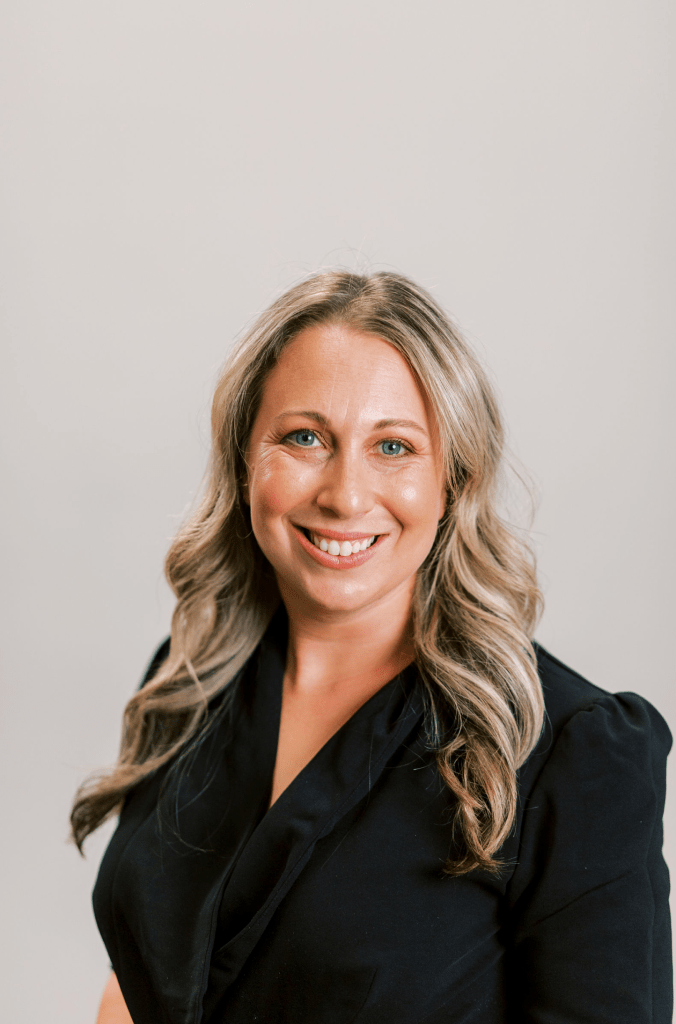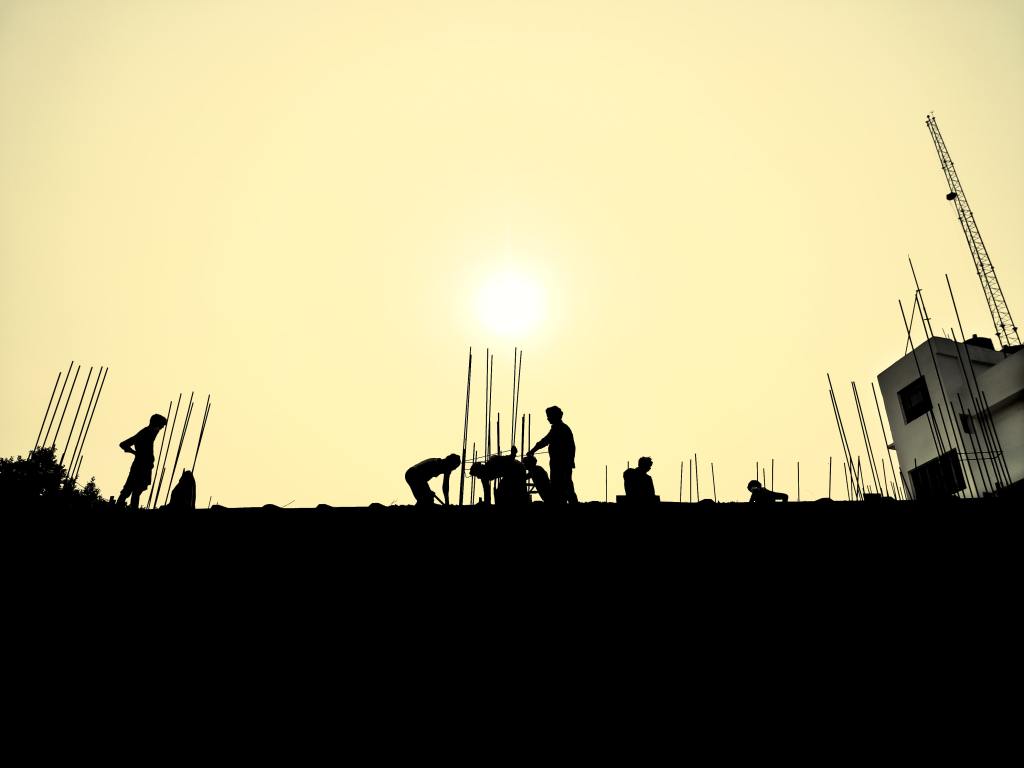Human rights advocate Kim Randle founded an app to discover the extent of supply chain slavery to help companies change how they do business.

Kim Randle, founder and CEO of FairSupply, is an experienced and innovative human rights advocate specialising in modern slavery. In an interview with Forbes Australia, Kim explains her deep conviction that great data is mission critical to transforming how companies engage with people and the planet.
What was your initial training that led you to see the issue of supply chain risk?
I began my career in commercial litigation at top tier law firms in the US. Litigation was my first exposure to how the operations of corporations had a direct impact on workers deep within that corporation’s supply chain.
I pivoted my career into the human’s rights space when I took the position of Senior Director of Corporate and Legal at International Justice Mission Australia, the world’s largest anti-slavery NGO. In this role, I had the privilege of meeting survivors of modern slavery in Uganda, Cambodia, and Thailand.
While these survivors were far removed from the purchase of my everyday products such as phone, coffee, computer, and chocolate (the essentials) I understood that along with the 50M other victims who are currently in slavery today, these human beings were the hidden workers or modern slavery risk hidden deep within the supply chains of the products I consumed every day.
How does FairSupply conduct its research and how accurate is the data?
FairSupply’s theory of change is simply you can’t fix what you can’t see. We know that ESG risk whether that be modern slavery, GHG emissions or biodiversity impact is hidden deep within complex global supply chains. That is why supply chain transparency is paramount to all research undertaken at FairSupply. The culmination of our research is an ‘Integrated Assessment Engine’ which glues together over 250 data sources, 1.8B global financial transactions, representing 99.8% of global GDP to map over 40B supply chains to Tier 10 and measure the ESG risk along each of those supply chains. We embed all our data with reliability metrics to ensure the accuracy of our data.
When you started in 2019, what were you hoping to achieve?
To utilise the regulatory tailwind of the Modern Slavery Act to ensure that organisations required to address modern slavery risk in their supply chain were identifying the risk to real people.

My professional ambition and the objectives of the business have always related to what I want to model to my three young daughters which if described in a sentence (or three) would be ‘The standard you walk past is the standard you set. As an educated women born and living in Australia, complacency is not an option.’ I strongly believe that each individual and entity needs to be the change they wish to see collectively.
How can mapping a supply chain identify issues … what can it show, how can it highlight problems?
While it is estimated there are 15,000 people living in slavery in Australia, this is a small proportion of the 50 million reported globally. Even the simplest product – such as a pencil, chewing gum or paperclip – purchased by an Australian organisation relies indirectly on millions of synchronised, global supply chains.
Kim Randle will be joining Forbes Australia at its Women’s Summit 2023 on 22 March at the International Convention Centre in Darling Harbour, Sydney. Tickets are on sale now.
In circumstances, where those 50M people in slavery, along with carbon emissions and species risk are hidden deep within those supply chains, understanding where is essential to not only identifying where the problem is existing but directing how to fix it.
Do companies have a responsibility to do these checks on suppliers and if not, why not?
Yes. Companies in Australia are legally required to identify, assess and mitigate modern slavery risk in their operations and suppliers. The Modern Slavery Act 2018 (Cth) is one of the first pieces of legislation to require organisations to identify risk beyond those suppliers that they have a direct contractual relationship with. This requires companies not only to undertake due diligence on their own suppliers but to ensure that their own suppliers have a satisfactory level of transparency of their suppliers.
Who do human rights abuses affect?
The Global Estimates on Modern Slavery (“GEMS”) released by the International Labour Organisation and WalkFree last month, revealed that almost 50 million people were living in modern slavery, either forced to work against their will or in a marriage that they are forced into. This number translates to nearly one of every 150 people in the world.
Of these people, approximately 27.6 million were in forced labour and 22 million were trapped in forced marriages. 1 in 4 victims of modern slavery are children, 54% are women and girls.

This clearly demonstrates that we need to take urgent and effective action. The global community committed to end all forms of child labour by 2025, and to end modern slavery by 2030 as part of the Sustainable Development Goals. But instead of making progress – we are going backwards.
GEMS showed an increase of over 9 million people in modern slavery since 2018. This is staggering. It represents not only an increase in the total number, but also an increase in prevalence from 5.4 people living out of every thousand to 6.4 out of every thousand. So while the global population has increased, the prevalence of modern slavery has also increased.
Human rights abuses affect the most vulnerable populations often compounding ‘double disadvantage’. COVID-19, conflict and climate change in recent years have led to unprecedented disruption to employment and education, increases in extreme poverty and forced and unsafe migration, and an upsurge in reports of gender-based violence – this has been referred to as the “shadow pandemic”. All of these things exacerbate the risks of modern slavery. They make vulnerable people more vulnerable – particularly those who are living in poverty, the socially excluded and migrant workers.
How does FairSupply help to solve the problem?
FairSupply has a unique ability to identify where modern slavery risk is likely to be occurring in a company’s supply chain and the extent of it. Once that has been identified, FairSupply partners with organisations to undertake deep due diligence on their suppliers to assess and mitigate modern slavery risk and address the very real risk to people. One of the most rewarding things about FairSupply is seeing companies who through their ethical purchasing practices or investment processes are contributing to addressing these severe forms of exploitation.
What action would you like to see as a result of what you have created?
I would like to see companies in Australia thriving not as a result of the exploitation of other human beings deep within their supply chain but rather because addressing human rights risks is a normalised part of corporate responsibility and a social license to operate.
What are some statistics and values that you can share that help to show the issue, the extent of the problem and some of the work you have been achieving.
To date, we have assessed over $750 billion of spend and investment data to identify modern slavery risk of Australian companies.
This risk assessment has informed our clients engagement with the issue of modern slavery across their operations and supply chains. We have worked with many of these clients to implement improvements in governance, policies, education & awareness, remediation actions and strategy, continuous improvement processes, monitoring and reporting. The theory of change which underpins the Modern Slavery Act denotes this activity will have significant knock-on impact on those at risk of modern slavery.
Where did the FairSupply story start?
We did a time-lining exercise recently as a team celebrating just how far we’ve come in the space of a few years. Where did the FairSupply story start?
An honest answer had to lie in my childhood and the childhood of my co-founder. I’ve always had an activist heart. Justice has been the beat of it. Stubborn, argumentative. Passionate.
I studied law because I wanted to see justice done. I worked those early years in LA doing corporate litigation. On the weekends my husband and I would drive to Mexico and work at an orphanage.
The juxtaposition was crazy, but also a necessary antidote to the deeper insanity of entitlement.
Returning to Australia, I worked family law, then as a young mother I took a job with International Justice Mission, the world’s largest anti-slavery organisation. As Director of Corporate and Legal I had the privilege of leading teams into Uganda to see justice systems strengthened. I was also involved in the shaping of Australia’s Modern Slavery Act 2018 (Cth).
In 2019 I took a big step. I started my own law firm – the first exclusively dedicated to helping companies comply with Australia’s Modern Slavery Act.
I began working with businesses, helping them comply with the Act. What I quickly discovered was that business knew little about slavery and even less about slavery in supply chains. Yet the Act required them to have visibility over their supply chains.
I hoped that someone had built a supply chain visibility app. I checked. They hadn’t.
So I decided to build one. Well, to be precise, the human rights lawyer met an industrial mathematician, Dr Arne Geschke. Dr Arne had actually mapped the world’s supply chains! It was then a matter of plotting global slavery prevalence along those chains. And creating a means by which clients could plug in their spend data and get visibility over their supply chain and the slavery risk along it.
To do that, we started a tech company. Today, we’re providing ESG risk assessments to some of Australia’s biggest companies.
Now companies can see how they’re impacting people and planet by what they spend and where they can invest. Now they can see the problem, they can fix it.
That’s justice! That’s why I started this business.